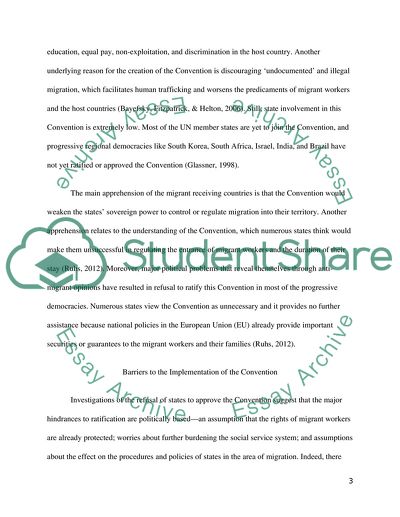Cite this document
(Challenges of Implementation of the United Nations Convention on Term Paper, n.d.)
Challenges of Implementation of the United Nations Convention on Term Paper. Retrieved from https://studentshare.org/politics/1803569-challanges-of-implementation-of-the-united-nations-convention-on-migrant-workers-right
Challenges of Implementation of the United Nations Convention on Term Paper. Retrieved from https://studentshare.org/politics/1803569-challanges-of-implementation-of-the-united-nations-convention-on-migrant-workers-right
(Challenges of Implementation of the United Nations Convention on Term Paper)
Challenges of Implementation of the United Nations Convention on Term Paper. https://studentshare.org/politics/1803569-challanges-of-implementation-of-the-united-nations-convention-on-migrant-workers-right.
Challenges of Implementation of the United Nations Convention on Term Paper. https://studentshare.org/politics/1803569-challanges-of-implementation-of-the-united-nations-convention-on-migrant-workers-right.
“Challenges of Implementation of the United Nations Convention on Term Paper”, n.d. https://studentshare.org/politics/1803569-challanges-of-implementation-of-the-united-nations-convention-on-migrant-workers-right.


